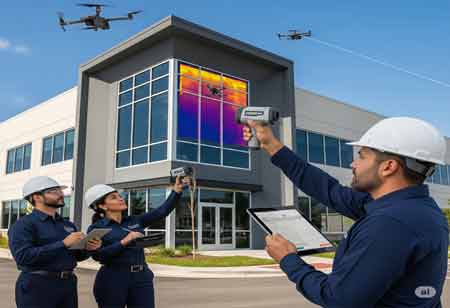Thank you for Subscribing to Construction Business Review Weekly Brief
Specials
- Apartment and Condominium Contractors Canada
- Decking Canada
- Architectural Glass Europe
- MEP APAC
- Construction Saudi Arabia
- German Apartment and Condominium Contractors
- Construction Law APAC
- Outdoor Construction
- Foundation Construction Canada
- MEP Canada
- Kitchen and Bath
- Cold Storage Construction APAC
- Precast Concrete Europe
- Construction Staffing Europe
- Pre-Construction Services
- Flooring System APAC
- Scaffolding Canada
- Swimming Pool Construction Canada
- Construction Management Canada
- Cold Storage Construction Canada
- Flooring Systems Europe
- Residential Construction
- Concrete Canada
- Construction Cladding Europe
- Construction Cladding APAC
- Concretes, Aggregates and Construction Materials APAC
- Concretes, Aggregates and Construction Materials Europe
- Commercial Contractors Europe
- Commercial Contractors APAC
- Dummy
- Construction Insulation, Coating and Waterproofing
- Construction Management APAC
- Landscaping Canada
- Construction Coating Europe
- Construction Tech Startups Europe
- Insulation Services Europe
- Mechanical Contractor Canada
- Mould Remediation and Testing Europe
- Swimming Pool Construction APAC
- Building Sealing Solutions Europe
- Construction Engineering Services
- Mechanical Electrical and Plumbing
- Roofing Systems Europe
- Architectural Glass APAC
- Startups APAC
- Construction Forensic and Owners Representative
- Flooring System
- Waterproofing APAC
- Wall Systems
- Safety and Compliance Europe
- Construction Bidding and Auctions
- Modular and Prefab Construction
- Architectural Glass
- Construction MENA
- Construction Demolition and Recycling Europe
- Modular Construction Europe
- Construction Interiors
- Steel Building APAC
- HVAC
- Doors and windows
- Construction Latam
- Building Information Modeling APAC
- Sustainable Construction APAC
- Building Restoration and Maintenance
- Commercial Contractors
- Specialty Construction
- Construction Engineering Canada
- Construction Engineering MENA
- Modular Construction Canada
- Modular Construction APAC
- Roofing and Siding Systems
- Workforce Management and Staffing
- Roofing Systems APAC
- Construction Consulting
- Steel Building Europe
- Construction Demolition and Recycling APAC
- Safety and Compliance APAC
- Concretes, Aggregates and Construction Materials
- Construction Cladding
Continuous Monitoring: A Link Between Construction and Facilities
Continuous monitoring integrates construction and facilities management using BIM, IoT, and AI, enabling data-driven insights, predictive maintenance, and intelligent, efficient, and sustainable building operations.

By
Construction Business Review | Friday, October 24, 2025
Stay ahead of the industry with exclusive feature stories on the top companies, expert insights and the latest news delivered straight to your inbox. Subscribe today.
Fremont, CA: The lifecycle of a built asset spans from its initial design and construction to long-term operation and maintenance, forming a complex continuum. Traditionally, these phases have operated in isolation, leading to inefficiencies, miscommunication, and missed opportunities for optimization. However, a transformative shift is occurring, driven by the growing adoption of continuous monitoring. This approach effectively bridges the gap between construction and facilities management. By integrating these phases, we can foster a proactive, data-driven strategy that benefits every stage of a building's lifecycle.
Key Technologies Driving the Integration
Central among these is Building Information Modeling (BIM), which offers a comprehensive, data-rich digital representation of a building throughout its lifecycle. When integrated with real-time monitoring systems, BIM evolves into a digital twin. This model not only facilitates performance analysis and predictive simulations but also serves as a centralized repository for all building-related data. During the construction phase, digital twins can track progress against the BIM model. Once the building becomes operational, they enable monitoring of actual performance in comparison to the original design intent.
The Internet of Things (IoT) further enhances this ecosystem through a wide range of affordable, interconnected sensors deployed across both construction sites and completed buildings. During construction, these sensors capture data on environmental conditions, equipment usage, material logistics, worker safety, and structural integrity. During the operational phase, they monitor key metrics, including energy consumption, air quality, occupancy, temperature, lighting, and the status of systems such as HVAC, plumbing, and security.
Given the volume and complexity of the data generated, Artificial Intelligence (AI) and Machine Learning (ML) are essential for analysis. These technologies identify patterns, detect anomalies, forecast equipment failures, and optimize energy usage, transforming raw data into actionable insights that enable proactive decision-making and automation.
Benefits Across the Asset Lifecycle
Continuous monitoring in construction and facilities management improves performance, safety, and efficiency throughout the building lifecycle. It enhances project oversight, on-site safety, and quality assurance by tracking environmental conditions, equipment status, and worker locations. As the project transitions from construction to operations, a digital twin provides in-depth knowledge of building systems and materials, facilitating smoother operations. In facilities management, continuous monitoring plays a crucial role in creating a comfortable and healthy space for occupants, enabling predictive maintenance strategies and optimizing energy usage. Early detection of anomalies enables proactive resolution and compliance with safety codes and environmental regulations.
The evolution of continuous monitoring within the built environment is paving the way for increasingly autonomous and intelligent buildings. Future advancements are expected to feature greater AI-driven automation, enabling systems not only to detect anomalies but also to initiate corrective actions independently. Buildings will become more deeply integrated with broader urban infrastructure, functioning as interconnected nodes within smart cities to support optimized energy management, traffic regulation, and emergency response coordination. As connectivity expands, robust cybersecurity measures will be essential to safeguard sensitive building data against emerging threats. Additionally, the use of more sophisticated predictive analytics, powered by expansive datasets and advanced algorithms, will allow stakeholders to forecast long-term performance trends and manage lifecycle costs more effectively. Through the adoption of continuous monitoring, the construction and facilities management sectors are transitioning toward a new paradigm—one in which buildings evolve into responsive, intelligently managed assets. This transformation not only enhances performance and efficiency but also contributes to the development of a more sustainable, resilient, and human-centric built environment.





